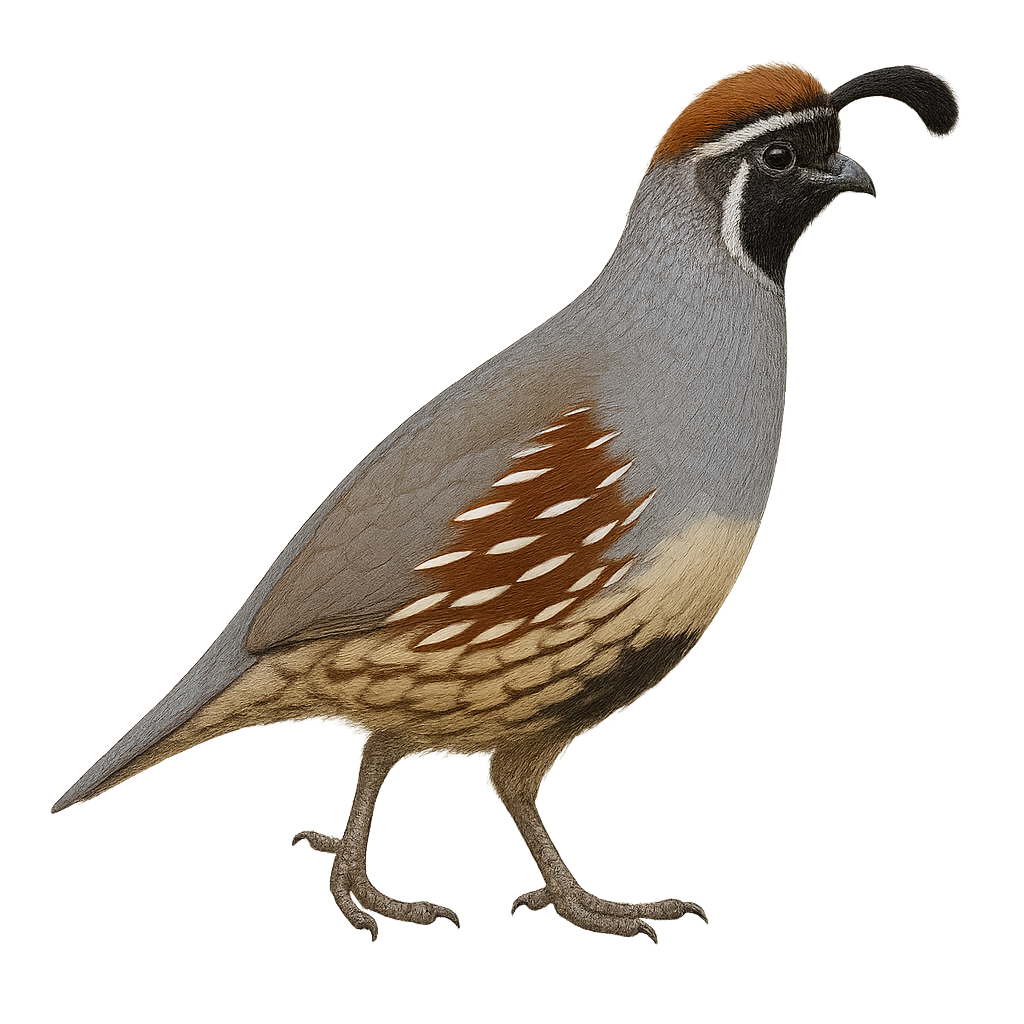Your wildlife photography guide.
Explore the gambel's quail in detail, study its behavior, prepare your shots.
Where to observe and photograph the gambel's quail in the wild
Learn where and when to spot the gambel's quail in the wild, how to identify the species based on distinctive features, and what natural environments it inhabits. The WildlifePhotographer app offers tailored photography tips that reflect the gambel's quail’s behavior, helping you capture better wildlife images. Explore the full species profile for key information including description, habitat, active periods, and approach techniques.
Gambel's Quail
Scientific name: Callipepla gambelii

IUCN Status: Least Concern
Family: ODONTOPHORIDAE
Group: Birds
Sensitivity to human approach: Suspicious
Minimum approach distance: 10 m
Courtship display: April to July
Incubation: 21-23 jours
Hatchings: April to August
Habitat:
deserts, semi-deserts, scrublands, arid areas
Activity period :
Primarily active during the day, with peak activity in the morning and late afternoon.
Identification and description:
The Gambel's Quail, scientifically known as Callipepla gambelii, is a medium-sized ground-dwelling bird recognized for its distinctive comma-shaped topknot and bluish-gray plumage with black and white markings. It inhabits the arid regions of the southwestern United States and northern Mexico. This bird favors desert and semi-desert habitats, feeding primarily on seeds, leaves, and insects. Social by nature, Gambel's Quail often forms groups called "coveys". During the breeding season, males perform courtship displays to attract females. Although capable of flight, it prefers to run to evade predators.
Recommended lens:
400mm – adjust based on distance, desired framing (portrait or habitat), and approach conditions.
Photography tips:
To photograph the Gambel's Quail, focus on early morning or late afternoon when the light is soft and activity is high. Use a 400mm lens or longer to capture details without disturbing the bird. Be patient and discreet, hiding behind bushes or rocks to blend into the environment. Opt for ground-level shots for a more immersive effect. A tripod can be helpful to stabilize your camera, especially in low light conditions.
The WildlifePhotographer App is coming soon!
Be the first to explore the best nature spots, track rutting seasons, log your observations, and observe more wildlife.
Already 1 430 wildlife lovers subscribed worldwide

